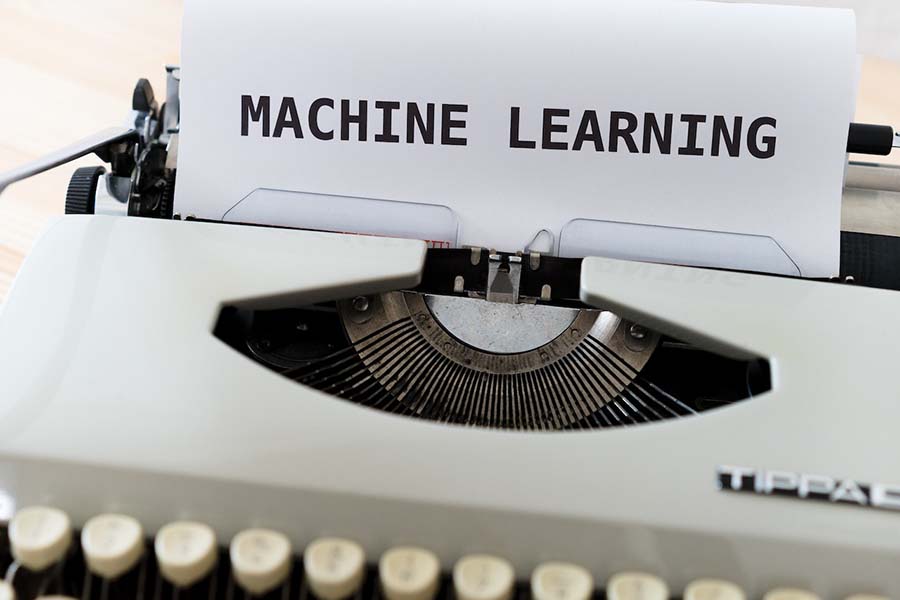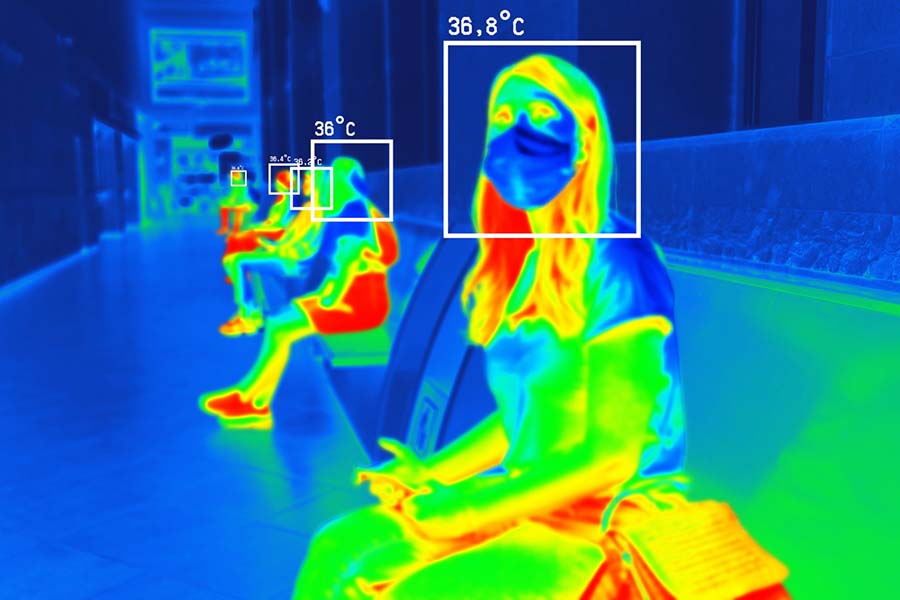Mastering AutoML: Perks, Uses & Hurdles Uncovered

Introduction
Recently, we had an insightful conversation with a machine learning engineer, discussing the challenges we face as newcomers in the field, particularly when tackling inappropriate ads content that violates the terms and conditions of our Dewalist Classified ads platform. The engineer recommended exploring AutoML, a technology specifically designed for those without extensive machine learning expertise. Intrigued by the potential of Automated Machine Learning (AutoML), we decided to delve deeper into this innovative solution to understand its capabilities better and how it can help address our platform’s challenges and beyond.
AutoML is an emerging technology that aims to simplify and accelerate the machine-learning process by automating repetitive and time-consuming tasks. By leveraging advanced algorithms and techniques, AutoML enables individuals and organisations to build effective machine-learning models with minimal manual intervention. This groundbreaking approach has transformed data science and artificial intelligence, making it more accessible to non-experts and fostering innovation across various domains.
“AutoML can reduce the time spent on manual model tuning by up to 90%, which can help businesses accelerate their AI projects.”
— Google Cloud
This blog aims to demystify the concept of AutoML, providing readers with a comprehensive understanding of its benefits, applications, and challenges. Through this exploration, we aim to empower readers with the knowledge required to make informed decisions about adopting AutoML in their projects and appreciate its potential to revolutionise how we approach machine learning and artificial intelligence.
Understanding AutoML
Definition and Concept
AutoML, or Automated Machine Learning, is a process that automates the end-to-end development and deployment of machine learning models. This includes data preprocessing, feature engineering, algorithm selection, hyperparameter tuning, model training, evaluation, and deployment. By automating these tasks, AutoML enables users with limited expertise in machine learning to build and deploy models efficiently while also improving the performance and reliability of models developed by experienced data scientists.

Evolution of AutoML
The concept of AutoML was first proposed in 2013 by researchers at Google Brain, who recognised the need to simplify the machine learning process and reduce the time and effort spent on model development. Since then, several organisations and researchers have developed various tools, platforms, and frameworks to support AutoML.
The evolution of AutoML has been driven by the increasing complexity of machine learning models and the exponential growth in the volume of data being generated. As organisations adopt AI and data-driven decision-making, the demand for skilled data scientists has outpaced the supply, leading to a growing interest in automated solutions like AutoML.
Comparison with Traditional Machine Learning
Traditional machine learning involves manual, labour-intensive tasks data scientists and engineers perform. These tasks include data preprocessing, feature extraction, algorithm selection, hyperparameter tuning, and model evaluation. This process can be time consuming and requires high expertise, which can be a barrier for many organisations.
In contrast, AutoML automates these tasks, enabling users to build and deploy machine learning models more quickly and with less expertise. AutoML platforms use advanced algorithms and optimisation techniques to automatically preprocess data, select appropriate algorithms, tune hyperparameters, and evaluate model performance. This accelerates the model development process and enables users to focus on higher-level tasks, such as problem formulation and interpretation of results.
While AutoML has many advantages over traditional machine learning, it is essential to recognise that it is not a replacement for human expertise. Instead, it is a powerful tool that can augment the capabilities of data scientists and help organisations make better use of their data.
Benefits of AutoML
Speed and Efficiency
AutoML streamlines the machine-learning process by automating repetitive and time-consuming tasks. This results in significant time savings and allows organisations to accelerate their AI projects. Furthermore, by reducing the time spent on manual model tuning, data preprocessing, and algorithm selection, AutoML enables faster development and deployment of machine learning models. This increased speed and efficiency can lead to quicker insights and decision-making, ultimately providing a competitive advantage.
Accessibility and Ease of Use
One of the critical benefits of AutoML is its ability to make machine learning more accessible to non-experts. With user-friendly interfaces and simplified workflows, AutoML platforms allow individuals with limited data science and machine learning knowledge to build, train, and deploy models. This democratisation of AI encourages cross-functional collaboration and enables organisations to tap into the power of machine learning, even if they lack a dedicated team of data scientists.
“In a study comparing AutoML platforms to data scientists, AutoML-generated models performed better than the human-generated models in 6 out of 10 cases.”
— Ribeiro, M. T., Singh, S., & Guestrin, C.
Improved Model Performance
AutoML platforms use advanced algorithms and optimisation techniques to automatically preprocess data, select appropriate algorithms, and tune hyperparameters. This can lead to improved model performance compared to manual techniques developed. In addition, by searching a vast space of possible model configurations, AutoML can often identify models with better performance than those created by human experts. Improved model performance can result in more accurate predictions, better insights, and increased business value.
Cost-effectiveness
By automating various tasks in the machine learning process, AutoML can help organisations save time and resources. This can translate into cost savings, as fewer resources are required for model development and deployment. Additionally, since AutoML platforms often lead to improved model performance, organisations can benefit from more accurate and efficient decision-making. This can result in better allocation of resources, ultimately leading to cost savings and improved business outcomes.
Addressing the Skill Gap
As organisations continue to embrace AI and data-driven decision-making, the demand for skilled data scientists has outpaced the supply. This skill gap can make it challenging for organisations to leverage the potential of machine learning fully. AutoML helps address this gap by enabling users with limited expertise to build and deploy models effectively. In addition, by automating complex tasks and simplifying the process, AutoML empowers a broader range of individuals to participate in machine learning projects, helping to bridge the skill gap and foster innovation.
Applications of AutoML
Natural Language Processing
AutoML has proven highly effective in natural language processing (NLP) tasks, such as sentiment analysis, text classification, and machine translation. By automating the feature extraction and model selection process, AutoML allows users to quickly build and deploy NLP models, enabling them to analyse large volumes of text data and derive valuable insights.
Image and Video Recognition
AutoML has been instrumental in computer vision tasks like image classification, object detection, and facial recognition. AutoML platforms can automatically identify the most suitable deep learning architectures and hyperparameters for a given dataset, resulting in highly accurate models. These models can analyse images and videos, enabling applications such as surveillance, autonomous vehicles, and content moderation.
Anomaly Detection
AutoML can be used to build models that can identify unusual patterns or outliers in data, which is helpful for tasks like fraud detection, network security, and quality control. By automating the feature engineering and model selection process, AutoML enables users to quickly build and deploy anomaly detection models, ensuring timely identification of potential issues and minimising their impact.

Predictive Analytics
Predictive analytics involves using historical data to predict future events or trends. AutoML has been widely adopted in this field to automate the model development process, enabling users to build accurate forecasting models with minimal effort. Applications of predictive analytics powered by AutoML include demand forecasting, inventory management, and customer churn prediction.
Medical Diagnosis
AutoML has been applied in the healthcare industry to build models that can assist in diagnosing various medical conditions. By automating the process of data preprocessing and model selection, AutoML enables healthcare professionals to quickly develop models that can analyse medical images, lab results, and patient records. These models can help identify diseases and conditions earlier, improving patient outcomes and more efficiently using healthcare resources.
Marketing and Customer Segmentation
AutoML can build models to analyse customer data and identify patterns or trends in marketing. These models can be used for customer segmentation, enabling organisations to target their marketing efforts better and personalise their communications. In addition, by automating the model development process, AutoML allows marketing professionals to quickly derive insights from customer data, resulting in more effective marketing campaigns and improved customer retention.
Challenges in AutoML
Data Quality and Preprocessing
Data quality plays a critical role in the success of any machine learning project, including those that use AutoML. Inaccurate, incomplete, or inconsistent data can lead to poor model performance. While AutoML platforms can automate data preprocessing to some extent, they may only sometimes be able to address all data quality issues. Therefore, users must invest time understanding their data and ensuring its quality before employing AutoML solutions.
Algorithm Selection and Model Interpretability
AutoML platforms can automatically select the most suitable algorithms and hyperparameters for a given task. However, this automated process may sometimes result in complicated models to interpret or explain. Model interpretability is crucial for understanding the factors that drive predictions and ensuring that models align with domain knowledge and human intuition. Addressing the challenge of interpretability in AutoML requires striking a balance between model complexity and comprehensibility.
“One of the major challenges in AutoML is data quality and preprocessing, as a slight change in the input data can lead to drastically different models.”
— Olson, R. S., & Moore, J. H.
Scalability and Computation Resources
AutoML can significantly speed up the model development process but can also be computationally intensive, especially when searching through an ample space of possible model configurations. As the volume of data and the complexity of models continue to grow, scalability and the efficient use of computational resources become increasingly significant challenges to address. Techniques such as distributed computing, parallelisation, and pruning the search space can help mitigate these challenges, but they may also add complexity to the AutoML process.
Privacy and Security Concerns
As with any machine learning project, AutoML solutions must address privacy and security concerns related to data handling and storage. Organisations must comply with data protection regulations and safeguard sensitive information using AutoML platforms. Additionally, there is a growing interest in exploring privacy-preserving techniques, such as federated learning and differential privacy, in the context of AutoML to minimise the risk of data breaches and protect user privacy.
Limitations in Customisation
While AutoML platforms are designed to simplify and automate the machine learning process, they may sometimes need more flexibility and customisation options to address specific use cases or unique domain knowledge. In addition, users with specialised requirements may find that AutoML platforms need to offer control over model development and tuning. In such cases, users need to understand the trade-offs between the ease of use provided by AutoML platforms and the need for customisation and fine-grained control.
Real-world AutoML Success Stories
Healthcare Case Study
A major healthcare organisation struggled to detect a specific type of cancer early due to the high volume of medical images that needed analysis. By employing AutoML, the organisation was able to develop a highly accurate deep-learning model capable of analysing the images and identifying early indicators of cancer. This significantly improved early detection rates, leading to better patient outcomes and more efficient use of healthcare resources. Furthermore, the automated model development process allowed the organisation to continually refine and improve the model as new data became available.

Finance Case Study
A financial institution wanted to leverage machine learning to enhance its fraud detection capabilities. With massive historical transaction data, the institution needed a solution to quickly and accurately identify potentially fraudulent activity. By using AutoML, the institution was able to develop a robust anomaly detection model that could identify suspicious transactions with high accuracy. This improved the organisation’s ability to detect and prevent fraud and reduced the time and resources required for manual review of transactions, ultimately leading to significant cost savings.
E-commerce Case Study
An e-commerce company aimed to improve its product recommendation system to boost sales and customer satisfaction. With a vast catalogue of products and a diverse customer base, building a highly effective recommendation model was a complex task. So the company turned to AutoML to streamline the model development process and automatically identify their dataset’s best algorithms and hyperparameters. The resulting recommendation model was highly accurate, leading to increased sales, improved customer satisfaction, and a more personalised shopping experience. In addition, AutoML allowed the company to continually refine and update the model based on new data, ensuring the recommendation system remained effective over time.
The Future Outlook for AutoML
Emerging Trends and Developments
AutoML continuously evolves, with new techniques and algorithms being developed to address its challenges and improve its capabilities. Some emerging trends and developments in AutoML include:
Neural Architecture Search (NAS): This approach aims to automate the design of neural network architectures for deep learning. By searching through a vast space of possible architectures, NAS can identify more efficient and accurate models than those designed manually.
Transfer learning and meta-learning: These techniques involve leveraging knowledge from previously trained models to improve the performance of new models. AutoML platforms can reduce the required training data and accelerate model development by incorporating transfer learning and meta-learning.
Integration with other AI technologies: As AI continues to evolve, we expect increased integration between AutoML and other AI technologies, such as reinforcement learning, natural language processing, and computer vision. This integration will enable the development of more sophisticated and powerful AI solutions.
“In a survey of 500 data scientists, 40% cited a lack of understanding about the specific algorithms used in AutoML as one of the main barriers to adoption.”
— Kaggle
The Role of AutoML in AI Democratisation
AutoML has been critical in democratising access to AI and machine learning. AutoML allows individuals and organisations with limited data science and machine learning expertise to build and deploy models efficiently by automating complex tasks and simplifying the model development process. This democratisation of AI is expected to continue as AutoML platforms become more advanced and accessible.
As AutoML becomes increasingly prevalent, we expect a broader range of individuals and organisations to benefit from the power of machine learning, leading to innovation across various industries and domains. Moreover, the increased accessibility of AI through AutoML will help bridge the skill gap in the field, fostering a more inclusive and diverse AI ecosystem.
Ultimately, the future outlook for AutoML is promising, with continued advancements and increased adoption expected to drive innovation, improve productivity, and democratise access to AI technologies.
Final Thought
In this blog, we explored the concept of AutoML, its benefits and applications, and the challenges it faces. AutoML automates the machine learning process, making it more accessible to non-experts and improving model development efficiency. The benefits of AutoML include speed, ease of use, improved model performance, cost-effectiveness, and addressing the skill gap.
We discussed various applications of AutoML, such as natural language processing, image and video recognition, anomaly detection, predictive analytics, medical diagnosis, and marketing and customer segmentation. Despite its advantages, AutoML faces challenges related to data quality, algorithm selection, scalability, privacy and security, and customisation limitations.
We also looked at real-world success stories showcasing the impact of AutoML in the healthcare, finance, and e-commerce sectors. Finally, we considered the future outlook for AutoML, highlighting emerging trends and its role in AI democratisation.
AutoML holds tremendous potential for transforming how organisations leverage machine learning and AI technologies. By simplifying and automating the model development process, AutoML enables more individuals and businesses to harness the power of AI, fostering innovation and driving growth across various industries.
As AutoML continues to evolve and mature, we expect it to become an increasingly important tool in AI, empowering users to build more accurate, efficient, and accessible models. By addressing its current challenges and capitalising on emerging trends, AutoML will play a pivotal role in shaping the future of AI and machine learning, making it an essential technology for organisations and individuals.
Be sure to check out our other related posts if you enjoyed this one:
- The Rise of Collaborative Robots: Transforming Industries
- Unmasking Cyber Secrets: The Art of Deception Revealed!
- Decoding Cyber Threats: The Social Engineering Menace
- Unlock the Ultimate Quest: Ready Player One’s Audio Adventure!
- Revolutionising Wellness: Metaverse Therapy Unleashes Mental Liberation!
- Code Mastery Unleashed: Transform Your Skills with Clean Code by Robert C. Martin! 🚀
- Top Must-Have Tech Gadgets for Kids – Unbelievable Fun!
- Mastering Crypto Trading: Proven Strategies
- Unveiling Ethereum 2.0: Advancements & Impact
- AI Transforms E-Commerce: A Digital Revolution
If you enjoyed this blog post, subscribe for updates and stay tuned for our latest tech insights.
Credits
- Featured image by Freepik.
- Understanding AutoML photo by Markus Winkler on Pexels.
- Applications of AutoML image by Freepik.
- Real-world AutoML success story photo by Tara Winstead by Pexels.









